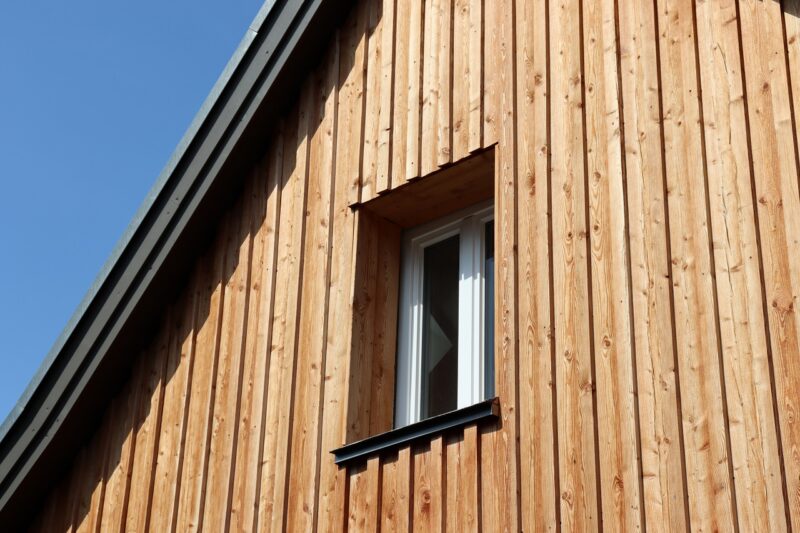Published: 12/02/25 By: Mike Bekin
Daydreaming about timber cladding? Start bringing your dreams to life by choosing the right profile for your project. In this guide, we are going to look at overlap, shiplap, louvre and tongue and groove, giving you the down low on what these are and which is right for your cladding. Let’s dive into it!
Overlap Timber Cladding
Overlap – also known as featheredge or lapped cladding – is the classic, traditional timber cladding profile. If you are going for a rustic look full of character, this is the profile for you. Each timber board is positioned so that it overlaps the one below it for a layered look which creates a tight seal, brilliant for long-lasting cladding.
Overlap timber cladding tends to be one of the most affordable timber profiles on the market, making it ideal if you are on a budget. Overlap is most commonly produced using species such as Larch, Douglas Fir and Oak.
Shiplap Timber Cladding
The shiplap timber profile was originally used to build ships, so expect a super durable, water-tight cladding. This profile is characterised by the slight overlap of the boards, which slot together thanks to a gentle slope and a ‘tongue and groove’ like join for a tight, streamlined appearance. Compared to featheredge, shiplap cladding sits more flush to the wall for a more modern design, and the weather resistance of this design is not something to be sniffed at.
Shiplap is commonly produced using high-end species such as Canadian Western Red Cedar or Clear Douglas Fir, but can also be made using more budget-friendly options such as UK-grown Larch or Cedar.
Louvre Timber Cladding
Louvre timber cladding is a lesser-known profile, consisting of slanted boards which are fixed at an angle. If you have ever seen a louvred shutter, it is a very similar design. Unlike the other profiles – which completely cover the underlying wall – louvre timber cladding sits almost perpendicular to the wall for a ‘shutter’ look which can help with light control and is a pretty striking, contemporary architectural feature. Some of our thermally modified clear timbers such as Ayous and Radiata Pine look amazing in this profile.
Bonus tip: if you would like a little added privacy behind glass windows, louvre timber cladding makes the perfect addition without completely blocking out your sunlight.
Tongue & Groove Timber Cladding
This is one of our favourite cladding profiles, so while it is last on the list, it is most certainly not the least! Tongue and groove features a protruding ‘tongue’ on one side of the board and a groove on the other, so that your boards can lock together for a tight, strong fit. It is well-known for its strength and durability, and its sleek appearance is perfect for modern homes.
Choose Sustainable Timber Cladding
Now that you know more about the different cladding profiles available, you have everything you need to make the right decision for your project. The next step in your cladding journey is – drumroll please – choosing the right timber species! Luckily, we are here to help with that.
Take a look at our wide range of sustainable timber cladding species to learn more about what is available, or get in touch with us and we will match you with the right timber for your choice.
Tags: louvre, overlap, shiplap, timber cladding, tongue & groove
Categories: Insights
